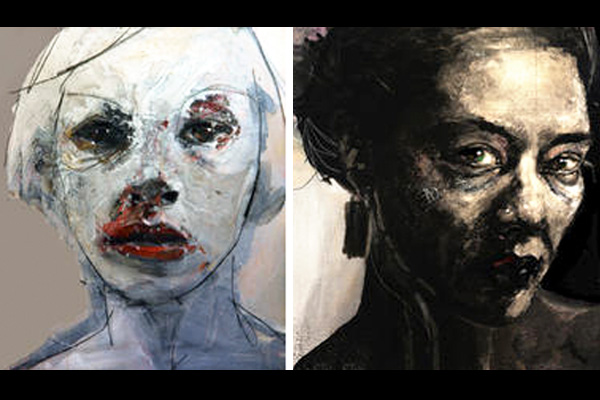LISTEN – ERASING STIGMA WITH ART –
April 28, 2021 –
VOLKOW: I’m a painter myself. And I was struck by the intensity of his images.
HAMILTON: When the scientist and the artist finally met, they found they had a lot in common.
STOEHR: We are coming at this problem from the same place.
HAMILTON: Both are determined to change society’s view of addiction, Volkow with science, Stoehr with art. Stoehr says he wants his paintings to provoke the sort of conversations that people began having about HIV/AIDS decades ago.
STOEHR: You had writers and artists and playwrights and poets and educators – and everybody started talking about it. And so they made it OK to talk about this.
HAMILTON: Volkow and Stoehr both rely on brain science to get their message across. For a decade now, Stoehr has been studying why certain images are more likely to trigger recognition and emotion and empathy in the brain.
STOEHR: Faces with expressive eyes and then with the hands are all things that we do have special places in our brain and we’re, in many cases, hard wired to respond to.
HAMILTON: Which is why he emphasizes these in his portraits. Stoehr also harnesses the brain’s response to ambiguity. For example, he will paint a slightly different expression on the right side of a face than on the left side. Stoehr says the effect of that approach was especially dramatic for one woman who wrote to him to describe her experience.
STOEHR: She looked at a painting of mine and said that I knew exactly how she felt and that she wanted to die. And she said that the next day, she looked at the very same painting and saw hope in the woman’s eyes. And then she said, you saved my life.
HAMILTON: That sort of emotional response is why a few months ago, Volkow invited Stoehr to speak to scientists at an NIH award ceremony.
VOLKOW: To the extent that art can make us understand and feel something in a different way, it has succeeded.
HAMILTON: And Volkow says the power of art and science together may be enough to lift the stigma from addiction.
Jon Hamilton, NPR News.



